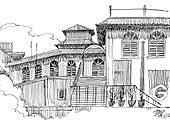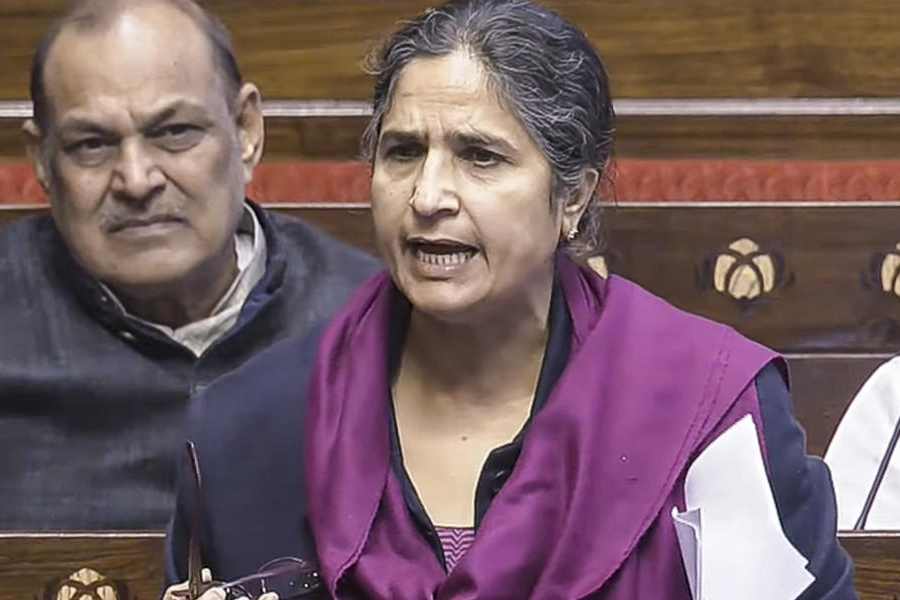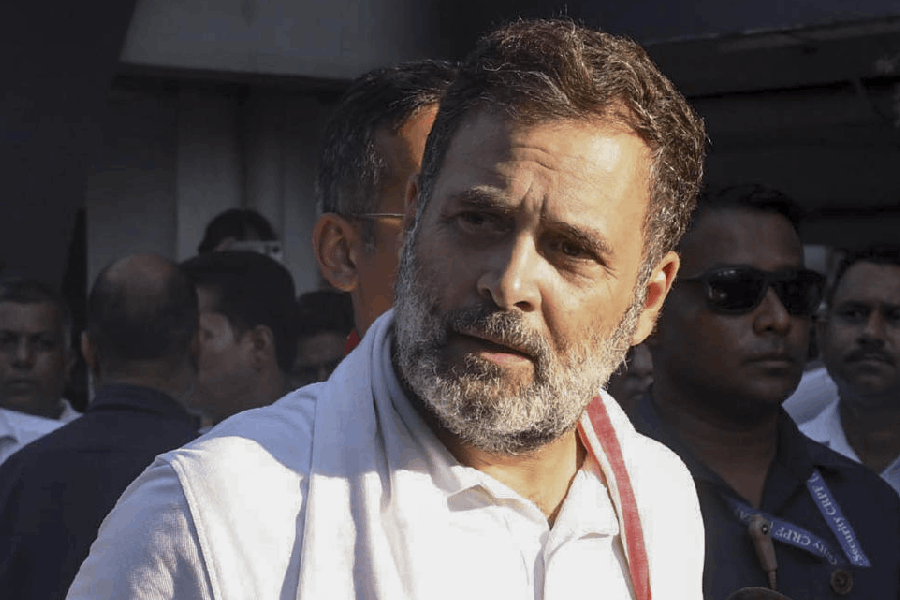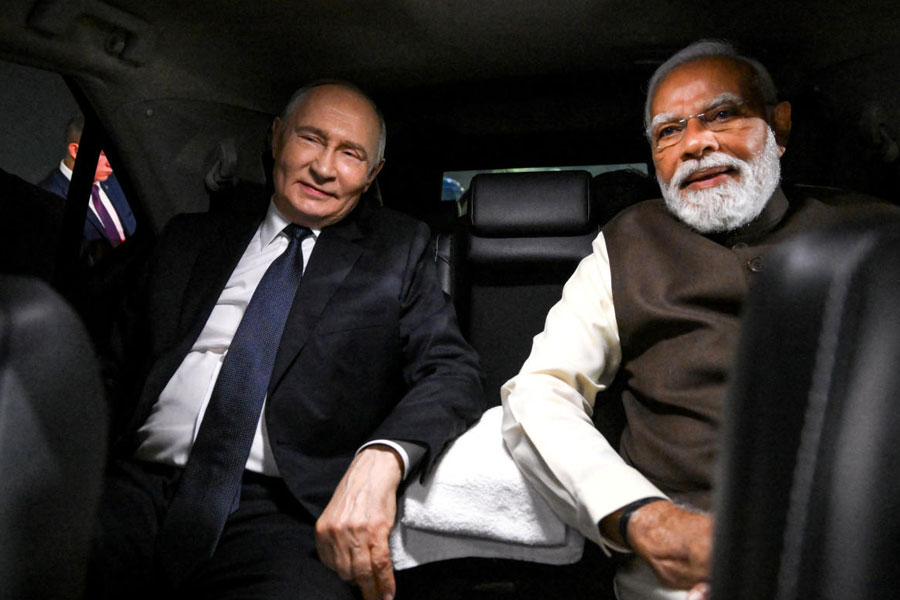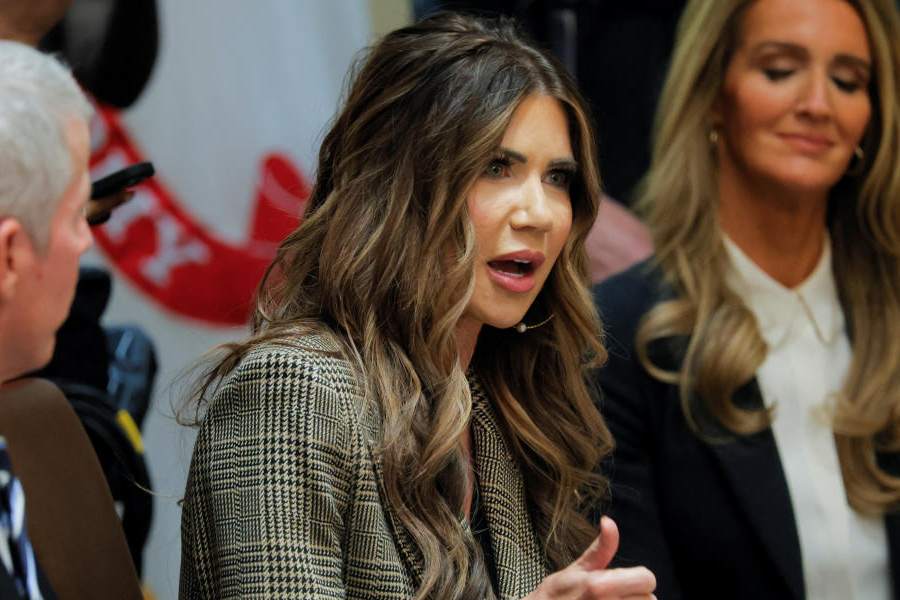 |
Nineteenth century was characterised by a remarkable outbreak of intellectual activities in India, which brought about a radical transformation in the country?s social and religious ideology. The situation of India during the period presented an interesting arena for emergence of religious reform movements resembling those in other parts of the world.
Rammohan Roy was the steward of this new awakening. In 1814, he founded the Atmiya Sabha which morphed into the more broad-based Brahmo Sabha in 1828. Two years later, Brahmo Sabha was transformed into Brahmo Samaj. The rest is history.
The Brahmo Samaj movement spread in Assam through a group of Assamese gentlemen who went to the neighbouring province of Bengal for higher studies. A group of officials, who came to Assam from Sylhet and Bengal on government postings, also bore the message of the Samaj to this far-eastern corner of India.
Juggoram Khargharia Phukan (1805-38) was the first Assamese to be attracted towards the Brahmo faith. He went to Calcutta in 1825 and got English education. Imbued with a spirit of liberalism he wrote a series of letters in Samachar Darpan opposing the practice of satidaha.A fidus Achates to Rammohan, the personal acquaintance, greatly influenced Phukan?s progressive mindset.
Gunabhiram Barua, Padmahash Goswami, Kamalakanta Bhattacharyya, and Laxminath Bezbaruah were other distinguished Assamese gentlemen who embraced the new faith.
Padmahash and Gunabhiram?s initiation into Brahmoism created ripples in the tradition-bound Assamese society.
The ripple soon turned into a wave of indignation and the society got a rude shock when Gunabhiram, true to his zeal of social reform, married Bishnupriya Devi, a Brahmin widow, in Dhubri in 1869. Padmahash also created a sensation when he publicly burnt his sacred thread in the presence of his guru, parents and kinsmen. True to the spirit of rationalism of the Brahmo faith, they showed exemplary courage and sincere commitment of purpose.
Records reveal that the earliest Brahmo Samaj temples in Assam were established in Dhubri, Goalpara, Guwahati, Nagaon and Tezpur between 1868 and 1870. A prayer hall was established in Guwahati where some Bengali gentlemen, mostly government officials, assembled. However, it was closed down due to ?migration of the government officers?. Brahmo Public Opinion, reported on 11 April, 1878: ?We are sorry to hear that the transfer of the seat of government of the province of Assam to Shillong has among its other effects, led to the closing of Brahmo Mandir at Gowhaty for purposes of public worship. With the migration of the Government officers the Brahmo officers have also migrated and their place of worship lies deserted.?
However, by the beginning of the 20th century some towns, particularly Dhubri, Shillong, Nagaon, Guwahati and Tezpur, had Brahmo followers.
In Guwahati, the faithfuls took the initiative to start a Brahmo prayer hall. A plot of land was acquired from the government in 1901 where a temple was constructed the same year. An Assam-type structure with brick elevation in the front, it stood at the end Lakhtokia, in the heart of the town.
It was here that the Brahmo fraternity of the town began to assemble for their prayers. The hall was named Brahmo Mandir. The first Board of Trustees of the Samaj, which was formed in 1916 comprised of Sarat Chandra Das, Heramba Ch. Maitra, Dr. Prankrishna Acharya, Gurudas Chakravarty, Raj Mohan Das, Sibnath Dutta, Prasanna Chandra Dasgupta, and Abhaya Charan Sen.
Some important Brahmo families of the town, who were closely associated with the Guwahati Brahmo Samaj, included those of Hemanta Kumar Lahiri, Prabodh Kr. Lahiri, Satish Chandra Roy, Jnanabhiram Baruah, Braja Gopal Halder, Prabhat Das, Subimal Das, Amalendu Sen, Ajay Sen, Amiya Kumar Das Indira Miri, Arun Barua, Rajendra Sarkar, Girija Das and others.
During the first half of the 20th century, the Samaj was an important centre of gathering of the social elite. Maghotasava, Bhadratsava and annual children?s gathering for cultural activities were some of the important festivals held at this mandir since its inception. Banalata Halder?s lilting songs added to the festive and genial atmosphere. Ajay Sen, Badal Das, Sunanda Sen?s conscientious hard work were pivotal role in making these festivals successful.
Over the years, the seat of Acharya (who led the community prayers) was adorned by Ramdayal Das, Kamal Lochan Das, Satish Chandra Roy, Suresh Ch. Mukherjee, Mahesh Chakravarty, Probodh Lahiri and even women like Basana Ranjan Halder, Puspalata Das and Indira Miri.
Since 1940s, the Samaj also ran a school which was looked after by Banalata Halder. Later, Minati Halder (Chanda), Bikash Ranjan Halder and others also became associated with the school and the Samaj.
Rabindranath Tagore visited the mandir on 1 November, 1919. Here he delivered a lecture on Sivanath Sashtri, the great Brahmo leader who had died a month earlier. The hall was packed by eminent citizens.
In the meeting Tagore, who had just surrendered his knighthood, was introduced by Kamal Lochan Das ?Sir?. In course of his speech Rabindranath remarked that he was pained to note the mention of the title ?Sir? which he had surrendered as a mark of protest at the national insult at Jalianwalabagh.
Much later, eminent Brahmo personalities like Satyajit Ray and Aparna Sen also visited the Guwahati Brahmo Samaj building and delivered lectures.
However, the old Brahmo Samaj mandir was dismantled and a new multi-storeyed structure constructed at the corner of the Panbazar overbridge at the turn of the 21st century under the initiative of Basana Ranjan Halder and Krishnendu Chanda.
The Brahmo Samaj in Guwahati, and for that matter, in Assam has been a small but effective community. The Brahma Samaj mandir stands tall today symbolising the concept of universal brotherhood and service above self.
Dipankar Banerjee

